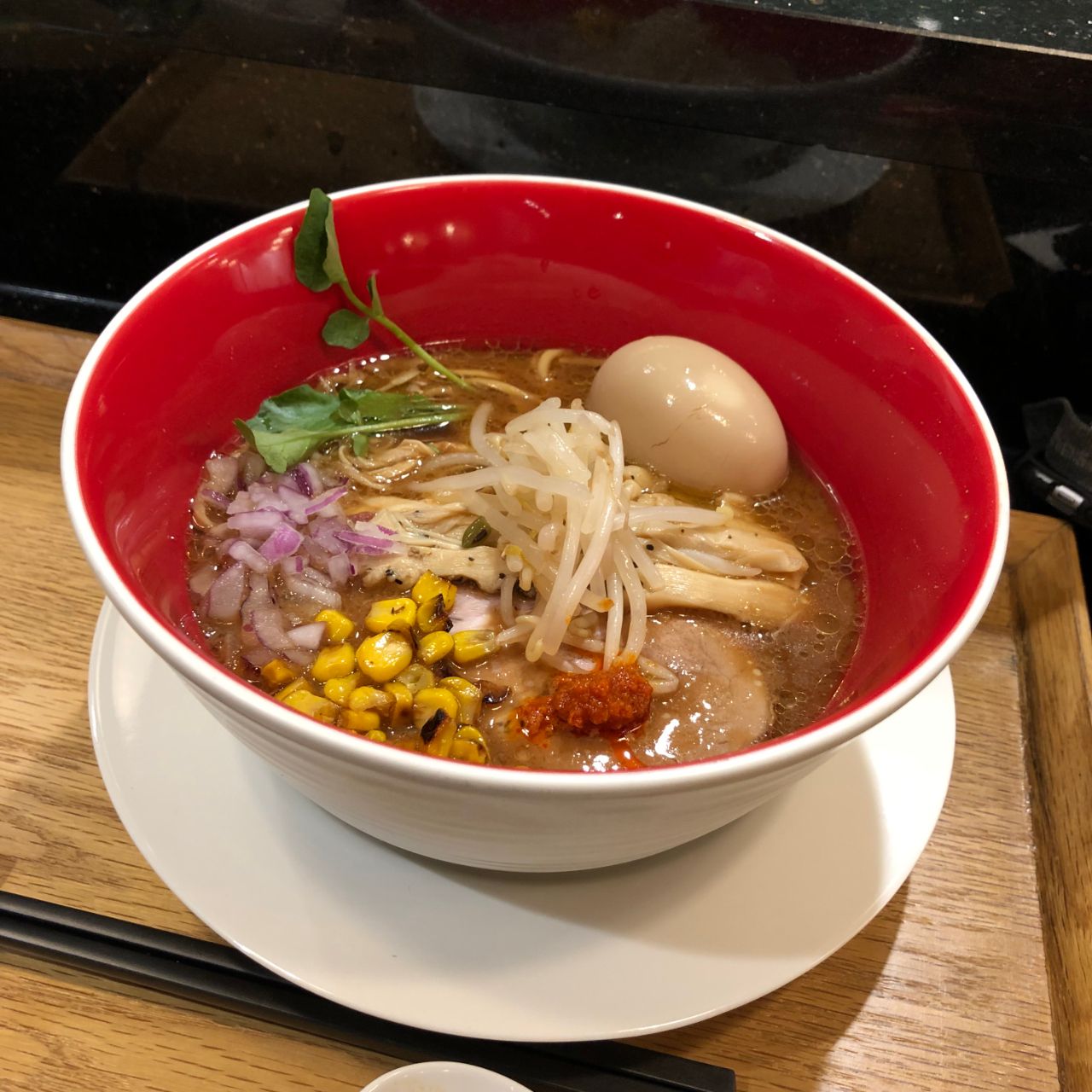Ramen aficionados, ready your chopsticks — because the Metreon is now home to the West Coast outpost for the world's first-ever Michelin-starred ramen emporium, Tsuta.
With an expected grand opening this Sunday, October 20, SF’s freshest whole-wheat noodle hotspot is bound to become a foodie staple in the Bay Area, no matter your broth preference. The nine-seat global destination of lauded Chef Yuki Onishi, brought to life in 2012 in Sugamo, Tokyo, became the first ramen restaurant to garner a Michelin star in 2015. Since then, Chef Yuki hasn't slowed on his global ambitions, and on Thursday SFist got to taste a sample of ramen craft.

Nestled between Freshroll and Split, Tsuta sits quietly among the more neon-lit destinations at Mission and 4th Streets. Though what the eatery lacks in storefront shock-and-awe it more than makes up for in its intimate, fast-casual modern interior space, perfumed with by the company’s aromatic broths, just large enough to seat 50.
Tsuta has other outposts of the original Tokyo restaurant (still known to this day as “Japanese Soba Noodles Tsuta”) in various parts of Asia including Singapore, but its San Francisco location will serve as the company’s first dip into the United States market; per Tsuta, new locations in Seattle, Los Angeles, and Portland are expected to launch in the near future. Helping tie the brand together, every single Tsuta boasts a similar aesthetic: deep-red, contemporary interiors, backdropped by wood panelings and an open kitchen, all set inside a minimalist dining space.)
Once seated the bar — which provides a front-row seat of your meal being prepared — a short, double-sided menu was placed atop my “ramen tray,” complete with a black pair of chopsticks, single napkin, and long-handled porcelain spoon; patrons can, too, can choose to either lap their bowls seated at either a warmly lit booth or table, as well.
Freshly steamed edamame and crisp karaage (fried chicken) seemed like the immediate go-tos to start, giving me a few beats to ponder what ramen to try first. After all of seventeen seconds passed, I chose their famous shoyu (soy sauce-based) soba, a lighter take on the cloudier, meat-stewed tonksotus that are famed at other like-destinations in San Francisco. For an additoinal umami kick, I ordered a bowl of miso soba as well.
The steamed and hull-seasoned edamame was quick to go down; the karaage crackled and shattered on my back molars with audible ease. Then began the enthusiastic broth slurping and harpooning stray pieces of char siu (pork). Much like the hints of the reduced bivalve sauce, notes of truffle oil were unmistakably present, at times at the expense of subtler flavors like, say, an added topping of bamboo shoots. Both ajitama (seasoned eggs) served were soft boiled to perfection, oozing their mesmeric yellow yolks into each ramen's opaque, off-brown broth.
Fast forward some thirty minutes, and the final satisfying, but sobering, slurp from my last sip echoed from an empty bowl. The only missing ramen accompaniment from that evening was a warm sake, solely because Tsuta was still without a liquor license — something that's expected to be squared away for this Sunday’s grand opening.
Tsuta will be open for dinner every day from 5 to 10 p.m. and, currently, will only sell about 300 bowls a day. That capped amount, along with other menu items, are expected to increase once Onishi — who will also be on hand at the grand opening — plays around (more) with locally-sourced ingredients and gauges the foot traffic coming in and out of their first US location.
But if ramen openings of recent years are any indication, he should have his hands full from Day One.
Image: Instagram via @tsutasingapore
For budgetary reasons, SFist editors and contributors occasionally accept complimentary meals from restaurants and their publicists. More often, we pay out of pocket for our meals. While we refrain from writing formal reviews, we make every effort when giving opinions about restaurants to be objective, and to focus more on food and ambiance than service in order to make up for any possible bias.

